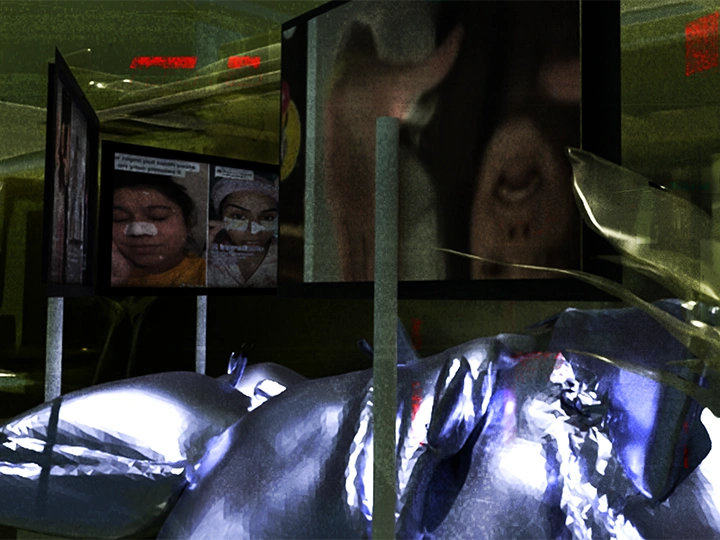Data-rituals: Learning from microtrends culture

Raquel Villa is a Spanish visual artist and designer working between Madrid and London. Her research-driven practice investigates digitally simulated systems that play with strange physics and misbehaving materials.
With a background in architecture, she builds fantasy worlds by exploring parametric systems and natural laws, infusing her digital work with surreal logic and a touch of magical realism.
In 2025, she began freelancing after four and a half years as a Senior Designer at XK studio in London, where she specialised in Houdini and worked on projects for clients including Google DeepMind, Biotherm, Apple and Nike.
Salome Kipiani is a London-based architectural designer whose work moves across architecture,politics and emerging technologies. With a formal background in architecture, her interests revolve around built environments and speculative futures, often questioning how algorithms, data, and digital systems shape us.
Her research-driven approach engages with themes such as filter bubbles, algorithmic bias, and networked structures—transforming abstract data into spatial narratives and critical design proposals. Salome’s work frequently takes the form of provocational studies, visual research, and conceptual frameworks that challenge normative architectural thinking.
Currently working at an architectural practice in London, she balances professional practice with independent inquiry, developing projects that blur the boundaries between design, sociology, and critical theory.
Despite growing up in different countries-Spain and Georgia—and shaped by distinct cultures, languages, and systems, we found ourselves formed in strikingly similar ways. Our routines and spaces reflect the same digital cues, revealing that we are shaped not only by culture or geography but by algorithmic infrastructures embedded in daily life.
Working simultaneously from two countries, we traced these patterns by researching personal data, targeted ads, cookies, and content flows, observing how they shape behavior, intimacy, and domestic space. We ask: What architectures are scripting us into these shapes? What if the home itself is a behavioral interface?
This project proposes a new way of reading architecture—not just as a physical form, but as shaped by algorithmic infrastructures that quietly influence domestic life and urban experience. Rather than rejecting this condition, we follow Srnicek and Williams in Inventing the Future, arguing that algorithmic governance must be exposed, understood, and strategically reappropriated—not resisted through nostalgia or localism. Our project builds a forensic mapping tool to reveal how algorithmic influence materializes in everyday routines and spatial behavior, offering a lens to understand the algorithmic city.
We’re less interested in viral celebrity moments than in the millions of quiet, un-viral routines that accumulate meaning—shaping who we are and the spaces we inhabit. These daily gestures become embedded codes of care, identity, and space. We want to give them a place—a room to exist outside the feed, a shared space to reflect, gather, and build together. This project spatializes digital consumption, turning what we endlessly scroll through into a site of connection and collective authorship.
Because, as Lorde said, “We live in cities you'll never see on-screen.” They are there—formed through habits, gestures, and shared aesthetics. It’s time we learn to read, run, and reshape them on our own terms.